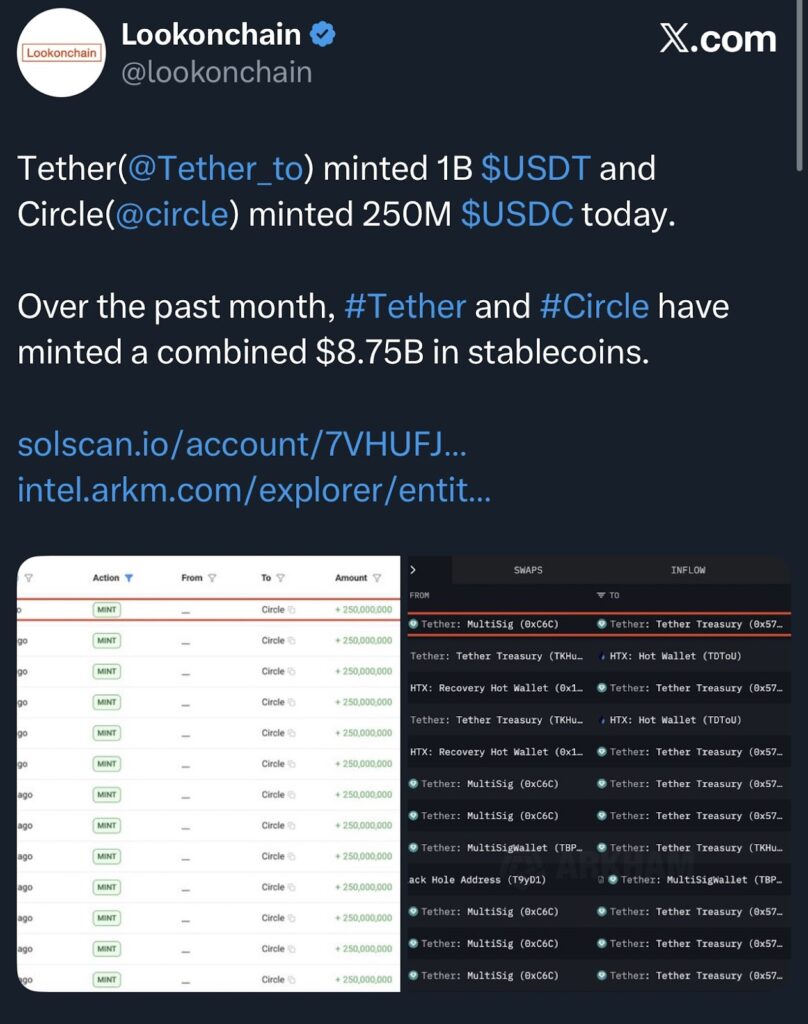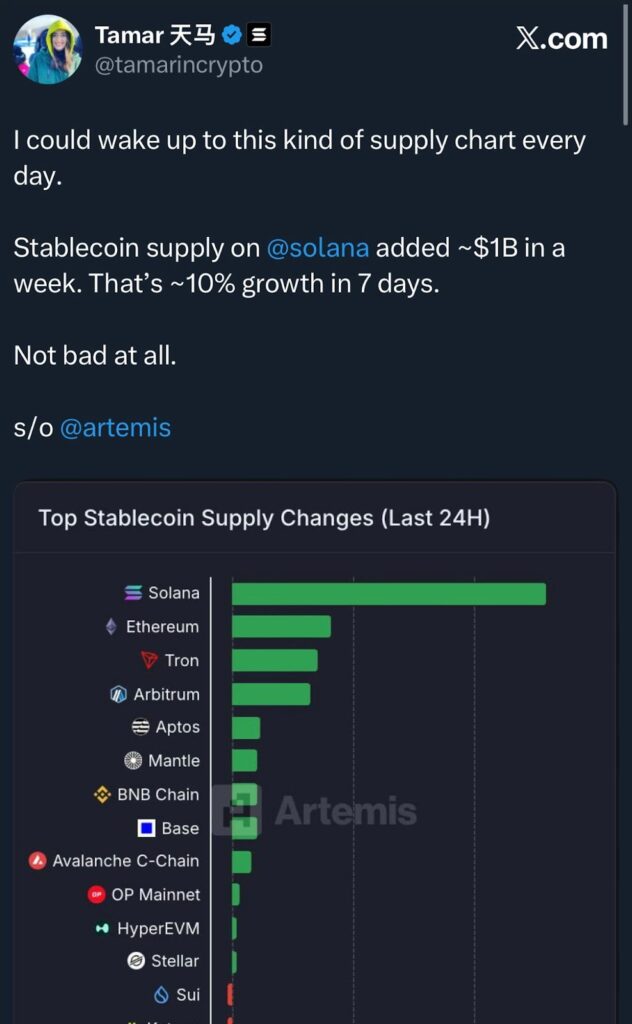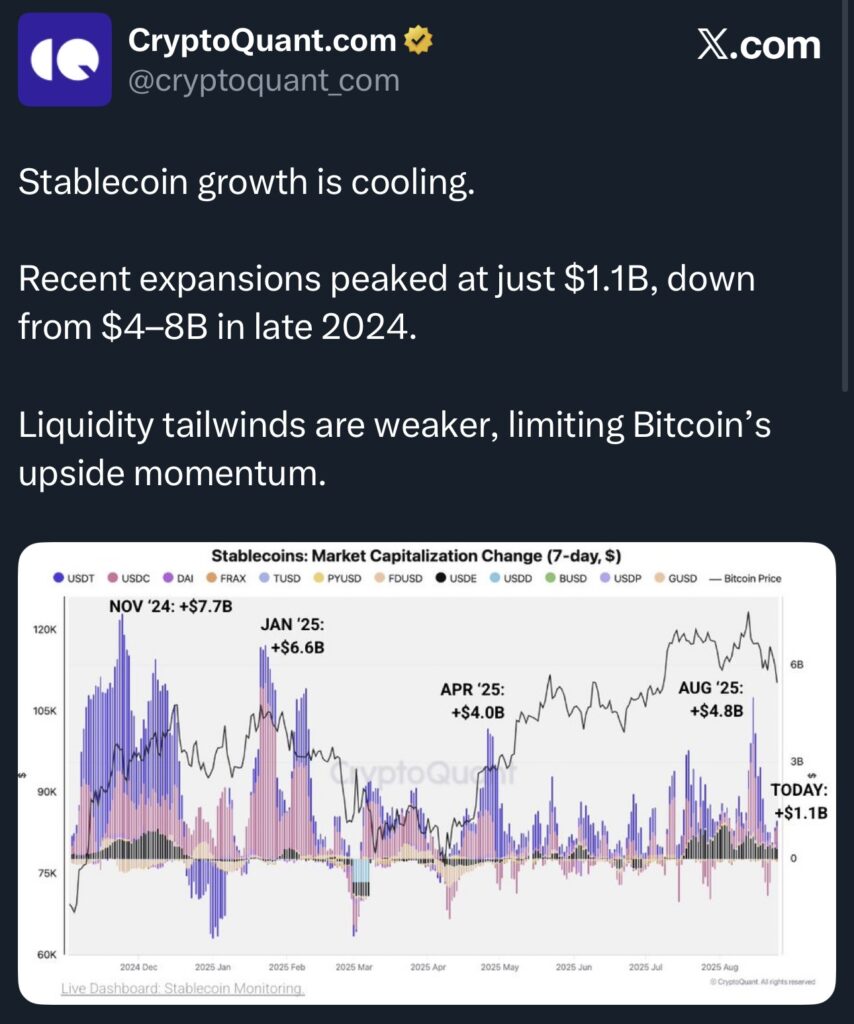Stablecoin Supply Hits $280B, but Here’s Why It’s Not All Bullish for Crypto
The stablecoin supply in the crypto market hit $280 billion for the first time. At first, this sounds like a very bullish sign.
Stablecoins are like cash in crypto. When more cash enters, traders often expect Bitcoin, Ethereum, and other tokens to rise.
But the full story is not that simple. Much of this new supply is being used inside DeFi apps.
That means the impact on prices is slower and less direct.
Stablecoin Supply Breaks Records
As per DefiLlama data, the total stablecoin supply has climbed to $280.46 billion. This record has been driven by heavy minting from Tether and Circle.

In a single day, Tether added $1 billion USDT, while Circle minted $250 million USDC. Over the past month, the two issuers together have released about $8.75 billion in new stablecoins.

For anyone new to crypto, stablecoins are digital tokens that are tied to the value of traditional currencies like the US dollar.
They don’t rise and fall in price like Bitcoin, which makes them useful for holding money safely between trades.
When more stablecoins enter the market, it usually means there’s extra cash that could move into crypto.
But that money doesn’t always end up buying Bitcoin or Ethereum right away; sometimes it flows into DeFi apps or just sits idle.
Stablecoins Prefer DeFi Over Exchanges
Stablecoin supply, despite peaking, might not be moving into the exchanges anymore. At least not all of it. A sizeable chunk seems to be preferring the DeFi chains.

Solana shows this clearly. In one week, it added almost $1 billion in stablecoins. That was about 10% growth. Ethereum, Tron, Avalanche, and Arbitrum also saw big inflows.
Traders are using stablecoins in DeFi to borrow or earn yield. This means less money goes to Bitcoin and other cryptos right away.
This might mean that traders are chasing yields more than direct trading-based incentives. And this preference hints at a lower market-related conviction.
Stablecoin Growth Has Slowed Compared to Last Year
The supply is bigger than ever. But weekly growth is much smaller now.

In late 2024, supply grew by $4 billion to $8 billion each week. Now, the weekly increase is closer to $1.1 billion.
This chart shows the change. More stablecoins are still coming in. But slower growth like this limits how much buying power enters the crypto market.
Why It’s Not Fully Bullish Yet
Crossing $280 billion in supply is a big milestone, but it does not automatically mean prices will rise. Much of this fresh money is going into DeFi platforms rather than spot exchanges.
Until more of it flows back into direct crypto buying, the effect on prices will stay limited.
The pace of growth also matters. Supply is climbing, but not at the same speed as last year, when weekly jumps were much bigger.
Because of that, Bitcoin and Ethereum are still missing the strong push traders usually expect in a clear bull trend.
For now, DeFi apps on networks like Solana and Ethereum seem to be the main winners from this inflow.
So the crypto market is supported by a record $280 billion in stablecoin supply, but most of it is driving DeFi activity instead of lifting Bitcoin or Ethereum directly.
Add to that the slower rate of growth, and the short-term bullish case looks weaker.
For traders, the point is simple: the cash is there, but unless it moves into spot markets, the next big rally may take longer to show up.
The post Stablecoin Supply Hits $280B, but Here’s Why It’s Not All Bullish for Crypto appeared first on The Coin Republic.
